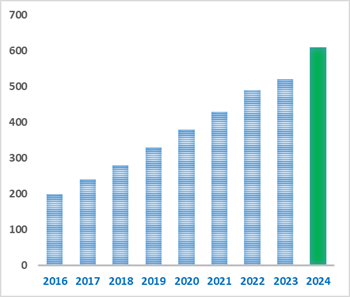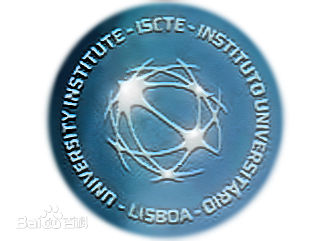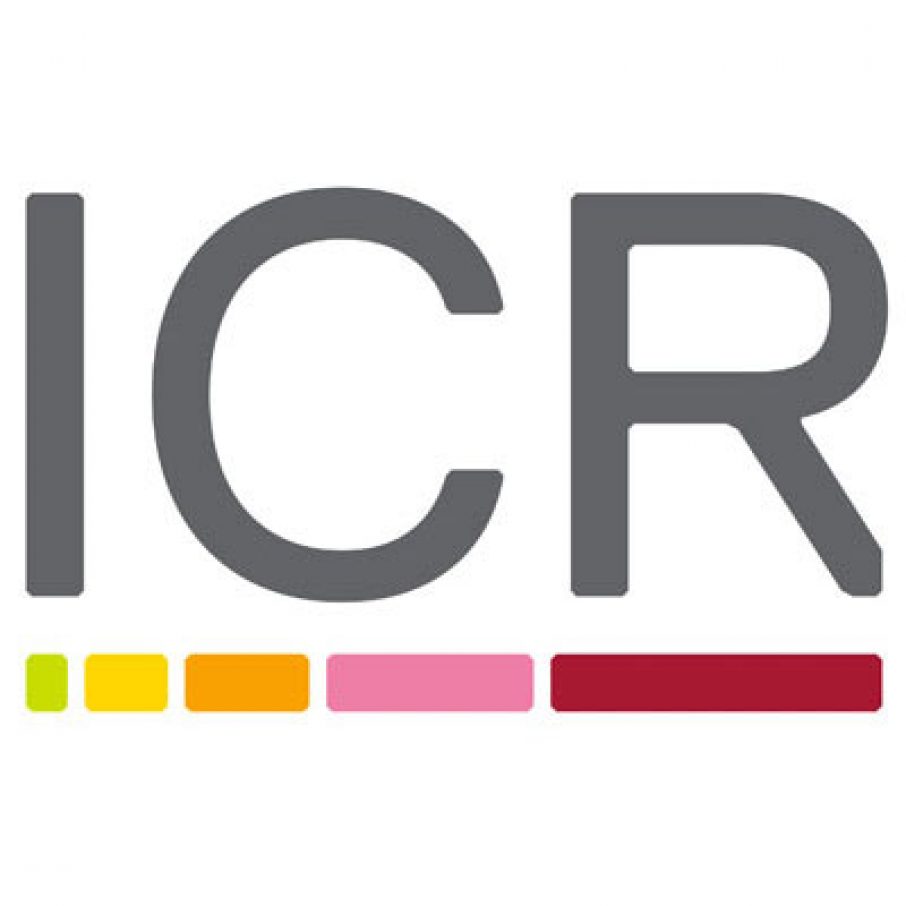RamelteonAgonist of melatonin receptor(M1-M2),highly selective CAS# 196597-26-9 |

- Tolbutamide
Catalog No.:BCC5001
CAS No.:64-77-7
- Melatonin
Catalog No.:BCN2196
CAS No.:73-31-4
Quality Control & MSDS
3D structure
Package In Stock
Number of papers citing our products

| Cas No. | 196597-26-9 | SDF | Download SDF |
| PubChem ID | 208902 | Appearance | White powder |
| Formula | C16H21NO2 | M.Wt | 259.34 |
| Type of Compound | Alkaloids | Storage | Desiccate at -20°C |
| Synonyms | 166597-26-9;TAK-375;Rozerem | ||
| Solubility | DMSO : ≥ 50 mg/mL (192.80 mM) *"≥" means soluble, but saturation unknown. | ||
| Chemical Name | N-[2-[(8S)-2,6,7,8-tetrahydro-1H-cyclopenta[e][1]benzofuran-8-yl]ethyl]propanamide | ||
| SMILES | CCC(=O)NCCC1CCC2=C1C3=C(C=C2)OCC3 | ||
| Standard InChIKey | YLXDSYKOBKBWJQ-LBPRGKRZSA-N | ||
| Standard InChI | InChI=1S/C16H21NO2/c1-2-15(18)17-9-7-12-4-3-11-5-6-14-13(16(11)12)8-10-19-14/h5-6,12H,2-4,7-10H2,1H3,(H,17,18)/t12-/m0/s1 | ||
| General tips | For obtaining a higher solubility , please warm the tube at 37 ℃ and shake it in the ultrasonic bath for a while.Stock solution can be stored below -20℃ for several months. We recommend that you prepare and use the solution on the same day. However, if the test schedule requires, the stock solutions can be prepared in advance, and the stock solution must be sealed and stored below -20℃. In general, the stock solution can be kept for several months. Before use, we recommend that you leave the vial at room temperature for at least an hour before opening it. |
||
| About Packaging | 1. The packaging of the product may be reversed during transportation, cause the high purity compounds to adhere to the neck or cap of the vial.Take the vail out of its packaging and shake gently until the compounds fall to the bottom of the vial. 2. For liquid products, please centrifuge at 500xg to gather the liquid to the bottom of the vial. 3. Try to avoid loss or contamination during the experiment. |
||
| Shipping Condition | Packaging according to customer requirements(5mg, 10mg, 20mg and more). Ship via FedEx, DHL, UPS, EMS or other couriers with RT, or blue ice upon request. | ||
| Description | 1. Ramelteon significantly improves symptoms in patients with gastroesophageal reflux disease and significantly improves patients' sleep experience. 2. Ramelteon could be a potential therapeutic drug, in adjunctive treatment of learning and memory deficits seen in patients with schizophrenia. 3. Ramelteon is effective for the prevention of delirium, ramelteon administered nightly to elderly patients admitted for acute care may provide protection against delirium. 4. Ramelteon is a novel MT1 and MT2 melatonin receptor selective agonist recently approved for insomnia treatment, demonstrates no significant effects indicative of potential for abuse or motor and cognitive impairment at up to 20 times the recommended therapeutic dose. |

Ramelteon Dilution Calculator

Ramelteon Molarity Calculator
| 1 mg | 5 mg | 10 mg | 20 mg | 25 mg | |
| 1 mM | 3.8559 mL | 19.2797 mL | 38.5594 mL | 77.1188 mL | 96.3986 mL |
| 5 mM | 0.7712 mL | 3.8559 mL | 7.7119 mL | 15.4238 mL | 19.2797 mL |
| 10 mM | 0.3856 mL | 1.928 mL | 3.8559 mL | 7.7119 mL | 9.6399 mL |
| 50 mM | 0.0771 mL | 0.3856 mL | 0.7712 mL | 1.5424 mL | 1.928 mL |
| 100 mM | 0.0386 mL | 0.1928 mL | 0.3856 mL | 0.7712 mL | 0.964 mL |
| * Note: If you are in the process of experiment, it's necessary to make the dilution ratios of the samples. The dilution data above is only for reference. Normally, it's can get a better solubility within lower of Concentrations. | |||||

Calcutta University

University of Minnesota

University of Maryland School of Medicine

University of Illinois at Chicago

The Ohio State University

University of Zurich

Harvard University

Colorado State University

Auburn University

Yale University

Worcester Polytechnic Institute

Washington State University

Stanford University

University of Leipzig

Universidade da Beira Interior

The Institute of Cancer Research

Heidelberg University

University of Amsterdam

University of Auckland

TsingHua University

The University of Michigan

Miami University

DRURY University

Jilin University

Fudan University

Wuhan University

Sun Yat-sen University

Universite de Paris

Deemed University

Auckland University

The University of Tokyo

Korea University
Ramelteon, a chronohypnotic, is an orally active and highly selective melatonin receptor (MT1, MT2 and MT3) agonist that preferentially binds to MT1 and MT2 receptors leading to potent inhibition of cAMP production in human cells expressing MT1 or MT2 receptors with the half maximal inhibition concentration IC50 values of 21.2 pM/L and 53.4 pM/L respectively [1].
The s-configuration and ether group in the chemical structure of ramelteon confer its high affinity towards MT1 and MT2 receptors with the dissociation constant Ki values of 14 pM and 112 pM respectively in comparison with that of 2650 nM for MT3 receptors [1].
Ramelteon has been found to potently promote sleep without causing any significant adverse effects leading to its application for the treatment of insomnia [1].
References:
[1] Miyamoto M. Pharmacology of ramelteon, a selective MT1/MT2 receptor agonist: a novel therapeutic drug for sleep disorders. CNS Neurosci Ther. 2009 Winter;15(1):32-51. doi: 10.1111/j.1755-5949.2008.00066.x.
- Eurycarpin A
Catalog No.:BCN4693
CAS No.:166547-20-2
- H-Val-OBzl.TosOH
Catalog No.:BCC3140
CAS No.:16652-76-9
- H-Pro-OBzl.HCl
Catalog No.:BCC3021
CAS No.:16652-71-4
- H-Tyr(Bzl)-OH
Catalog No.:BCC3130
CAS No.:16652-64-5
- Avasimibe
Catalog No.:BCC2274
CAS No.:166518-60-1
- Metaxalone
Catalog No.:BCC5223
CAS No.:1665-48-1
- trans-4-(Trifluoromethyl)cinnamic acid
Catalog No.:BCN1534
CAS No.:16642-92-5
- p-Nitrohydrocinnamic acid
Catalog No.:BCC9124
CAS No.:16642-79-8
- 1H-Pyrido[3,4-b]indole-1,3 4(2H,9H)-trione
Catalog No.:BCN7913
CAS No.:16641-79-5
- m-Nitrohydrocinnamic acid
Catalog No.:BCC9048
CAS No.:1664-57-9
- 9-O-Feruloyl-5,5'-dimethoxylariciresinol
Catalog No.:BCN1535
CAS No.:166322-14-1
- Taberdivarine H
Catalog No.:BCN6958
CAS No.:1662688-34-7
- Anidulafungin
Catalog No.:BCC4233
CAS No.:166663-25-8
- 4,4'-Bis(chloromethyl)biphenyl
Catalog No.:BCC8658
CAS No.:1667-10-3
- cis-Mulberroside A
Catalog No.:BCN3911
CAS No.:166734-06-1
- H-Cys(Trt)-NH2
Catalog No.:BCC2912
CAS No.:166737-85-5
- Naltrexone HCl
Catalog No.:BCC4613
CAS No.:16676-29-2
- Z-Tyr(Bzl)-OH
Catalog No.:BCC2735
CAS No.:16677-29-5
- Prerubialatin
Catalog No.:BCN6895
CAS No.:1667718-89-9
- Desmopressin
Catalog No.:BCC1525
CAS No.:16679-58-6
- H-Gly-NH2.HCl
Catalog No.:BCC2947
CAS No.:1668-10-6
- H-D-Orn-OH. HCl
Catalog No.:BCC3004
CAS No.:16682-12-5
- Chebulanin
Catalog No.:BCN3261
CAS No.:166833-80-3
- A-1210477
Catalog No.:BCC6508
CAS No.:1668553-26-1
Effects of Add-on Ramelteon on Cognitive Impairment in Patients with Schizophrenia: An Open-label Pilot Trial.[Pubmed:25598825]
Clin Psychopharmacol Neurosci. 2014 Dec;12(3):215-7.
OBJECTIVE: This open-label study examined the effects of Ramelteon on cognitive functions in 10 outpatients with schizophrenia. METHODS: Ramelteon (8 mg/day) was administered to 10 patients with schizophrenia for six months. The verbal fluency test, Trail-Making Test, the Wisconsin Card Sorting Test, the Stroop Test, the Digit Span Distraction Test, Iowa Gambling Task, the Rey Auditory Verbal Learning Test were evaluated at baseline and 6 months after treatment with Ramelteon. RESULTS: Ramelteon improved significantly the scores of Rey Auditory Verbal Learning Test. Additionally, Ramelteon exerted improvements in the verbal fluency and Iowa Gambling Task in 4 patients. CONCLUSION: Ramelteon could be a potential therapeutic drug, in adjunctive treatment of learning and memory deficits seen in patients with schizophrenia.
Preventive effects of ramelteon on delirium: a randomized placebo-controlled trial.[Pubmed:24554232]
JAMA Psychiatry. 2014 Apr;71(4):397-403.
IMPORTANCE: No highly effective interventions to prevent delirium have been identified. OBJECTIVE: To examine whether Ramelteon, a melatonin agonist, is effective for the prevention of delirium. DESIGN, SETTING, AND PARTICIPANTS: A multicenter, rater-blinded, randomized placebo-controlled trial was performed in intensive care units and regular acute wards of 4 university hospitals and 1 general hospital. Eligible patients were 65 to 89 years old, newly admitted due to serious medical problems, and able to take medicine orally. Patients were excluded from the study if they had an expected stay or life expectancy of less than 48 hours. INTERVENTIONS: Sixty-seven patients were randomly assigned using the sealed envelope method to receive Ramelteon (8 mg/d; 33 patients) or placebo (34 patients) every night for 7 days. MAIN OUTCOMES AND MEASURES: Incidence of delirium, as defined by the Diagnostic and Statistical Manual of Mental Disorders (Fourth Edition). RESULTS: Ramelteon was associated with a lower risk of delirium (3% vs 32%; P = .003), with a relative risk of 0.09 (95% CI, 0.01-0.69). Even after risk factors were controlled for, Ramelteon was still associated with a lower incidence of delirium (P = .01; odds ratio, 0.07 [95% CI, 0.008-0.54]). The Kaplan-Meier estimates of time to development of delirium were 6.94 (95% CI, 6.82-7.06) days for Ramelteon and 5.74 (5.05-6.42) days for placebo. Comparison by log-rank test showed that the frequency of delirium was significantly lower in patients taking Ramelteon than in those taking placebo (chi(2) = 9.83; P = .002). CONCLUSIONS AND RELEVANCE: Ramelteon administered nightly to elderly patients admitted for acute care may provide protection against delirium. This finding supports a possible pathogenic role of melatonin neurotransmission in delirium. TRIAL REGISTRATION: University Hospital Medical Information Network Clinical Trials Registry Identifier: UMIN000005591.
Ramelteon: a novel hypnotic lacking abuse liability and sedative adverse effects.[Pubmed:17015817]
Arch Gen Psychiatry. 2006 Oct;63(10):1149-57.
CONTEXT: Ramelteon is a novel MT1 and MT2 melatonin receptor selective agonist recently approved for insomnia treatment. Most approved insomnia medications have potential for abuse and cause motor and cognitive impairment. OBJECTIVE: To evaluate the potential for abuse, subjective effects, and motor and cognitive-impairing effects of Ramelteon compared with triazolam, a classic benzodiazepine sedative-hypnotic drug. DESIGN: In this double-blind crossover study, each participant received oral doses of Ramelteon (16, 80, or 160 mg), triazolam (0.25, 0.5, or 0.75 mg), and placebo during approximately 18 days. All participants received each treatment on different days. Most outcome measures were assessed at 0.5 hours before drug administration and repeatedly up to 24 hours after drug administration. SETTING: Residential research facility. PARTICIPANTS: Fourteen adults with histories of sedative abuse. MAIN OUTCOME MEASURES: Subject-rated measures included items relevant to potential for abuse (eg, drug liking, street value, and pharmacological classification), as well as assessments of a broad range of stimulant and sedative subjective effects. Observer-rated measures included assessments of sedation and impairment. Motor and cognitive performance measures included psychomotor and memory tasks and a standing balance task. RESULTS: Compared with placebo, Ramelteon (16, 80, and 160 mg) showed no significant effect on any of the subjective effect measures, including those related to potential for abuse. In the pharmacological classification, 79% (11/14) of subjects identified the highest dose of Ramelteon as placebo. Similarly, compared with placebo, Ramelteon had no effect at any dose on any observer-rated or motor and cognitive performance measure. In contrast, triazolam showed dose-related effects on a wide range of subject-rated, observer-rated, and motor and cognitive performance measures, consistent with its profile as a sedative drug with abuse liability. CONCLUSION: Ramelteon demonstrated no significant effects indicative of potential for abuse or motor and cognitive impairment at up to 20 times the recommended therapeutic dose and may represent a useful alternative to existing insomnia medications.
The Effect of Ramelteon on Heartburn Symptoms of Patients With Gastroesophageal Reflux Disease and Chronic Insomnia: A Pilot Study.[Pubmed:25887111]
J Clin Gastroenterol. 2016 Feb;50(2):e19-24.
BACKGROUND: There is a bidirectional relationship between gastroesophageal reflux disease (GERD) and sleep. It has been demonstrated that antireflux treatment can improve sleep quality in GERD patients with nighttime reflux. MATERIALS AND METHODS: Patients with heartburn and/or regurgitation >/=3 times/week and insomnia for >/=3 months were included. Patients were assessed at baseline with the demographic, GERD symptom assessment scale, Epworth sleepiness scale, Berlin sleep apnea, Pittsburgh sleep quality index, and the Insomnia severity index questionnaires. Subjects underwent an upper endoscopy followed by pH testing. Subsequently, subjects were randomized, in a double-blind, placebo-controlled trial, to receive either Ramelteon 8 mg or placebo before bedtime for 4 weeks. During the last week of treatment, subjects completed a daily GERD symptom and sleep diary and underwent actigraphy. RESULTS: Sixteen patients completed the study, 8 in each arm (mean age and M/F were 48.5 vs. 57.8 y, and 8/0 vs. 6/2, respectively). Patients who received Ramelteon demonstrated a statistically significant decrease in symptom score as compared with those who received placebo for daytime heartburn (-42% vs. -29%), nighttime heartburn (-42% vs. 78%), 24-hour heartburn (-42% vs. -3%), and 24-hour acid regurgitation (-26% vs. 19%) (all P<0.05). Insomnia severity index score was significantly reduced in patients receiving Ramelteon as compared with placebo (-46% vs. -5%, P<0.05). Ramelteon group also demonstrated a significant improvement in sleep efficiency and sleep latency, as compared with placebo, P<0.05). No significant adverse events were observed with Ramelteon. CONCLUSIONS: Ramelteon significantly improved symptoms in patients with GERD. In addition, Ramelteon significantly improved patients' sleep experience. Further studies are needed in the future (NCT01128582).


